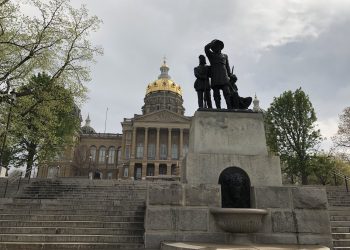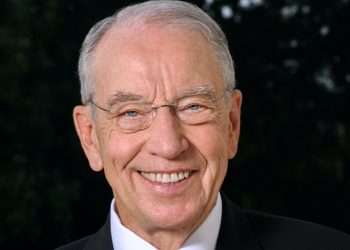Governor Kim Reynolds and the Republican-led legislature have enacted prudent budgets and lowered tax rates in recent years. Iowa’s economy is in a better position because of these sound fiscal policies. But eliminating burdensome regulations that hinder growth is just as important as controlling spending and easing taxes. And in comparison to its neighbors, Iowa has an enormous volume of regulations.
Policymakers should begin to address this long overdue problem by creating a review process that identifies and eliminates unnecessary rules. Regulations are a “forgotten tax.” Because their impacts aren’t captured in any state budget, lawmakers don’t devote as much attention to them as tax and spending decisions. Hence, regulators who work for state agencies go without adequate supervision, and the volume of rules tends to grow over time absent proper management.
In Iowa, a regulation is supposed to be reviewed every five years, but the current process lacks teeth. Agencies issue a report summarizing the results of reviews, but there’s no requirement to do anything about the many rules that have outlived their usefulness.
As a result, Iowa has come to have the most regulation of any state in the region. The Mercatus Center at George Mason University is studying the regulatory volume of the states based upon the number of restrictive words in code. Iowa has 161,000 such regulatory restrictions, as measured by instances of the terms “shall,” “must,” “may not,” “prohibited,” and “required.”
In terms of word count, Iowa’s rules contain 9.9 million words. It would take about 550 hours to read all of Iowa’s administrative code—that’s almost 14 weeks of full-time work. Truly comprehending and complying with all those requirements would take years.
By both of these measures—restrictions and word counts—Iowa is the most regulated state in the plains region, with a regulatory load above the U.S. state average. Kansas, for example, has about one-third as many words in its rules as Iowa does, and South Dakota has close to one-quarter of the number of restrictions.
Fortunately, the Hawkeye State has options for creating a stronger review process for regulations. Policymakers could enact regulatory reforms like those implemented in North Carolina and Idaho, for example. North Carolina has a 10-year review process, but the state also sets a schedule of expiration dates for rules so that they cease to exist unless they are reauthorized. In Idaho, rules must be repealed on a five-year staggered basis. If the regulating agency wants to keep its rule, it must refile a new one and justify it.
Other best practices exist. Iowa could replicate a regulatory reform that former President Donald Trump instituted, which requires agencies to eliminate two regulations for every new one added. Along with cutting taxes, Trump made regulatory reform a top priority of his administration, and robust economic growth followed.
Oklahoma and Ohio are also following the “two-for-one” approach. If Iowa did as well, senseless requirements, like those restricting who can become travel agents or dental assistants, could fall by the wayside.
It is time to ask why Iowa has so many regulations and begin the process of eliminating the ones that don’t make sense. Unshackling businesses from unnecessary requirements will create more economic growth and make Iowa more competitive with its neighbors.
















